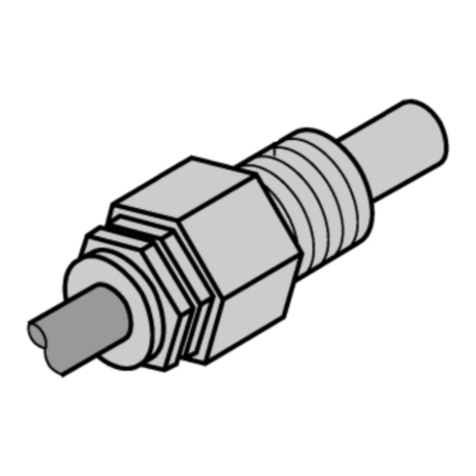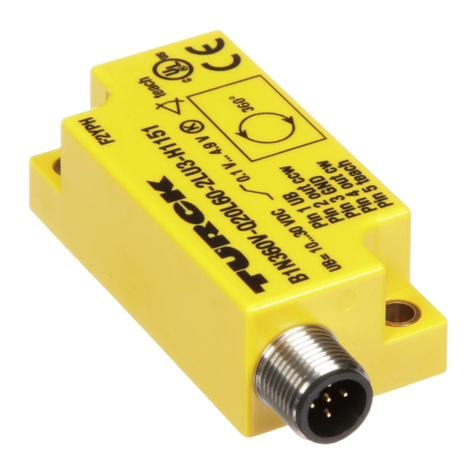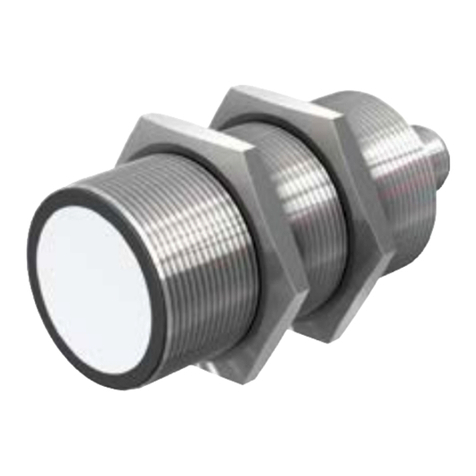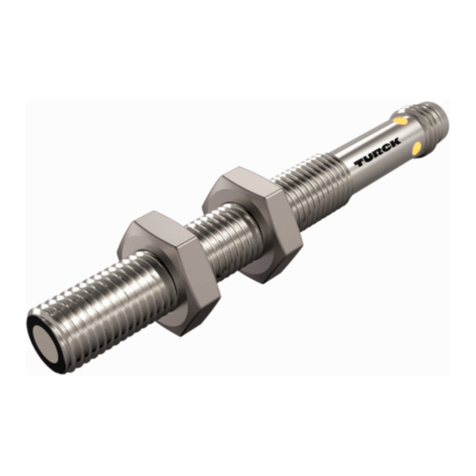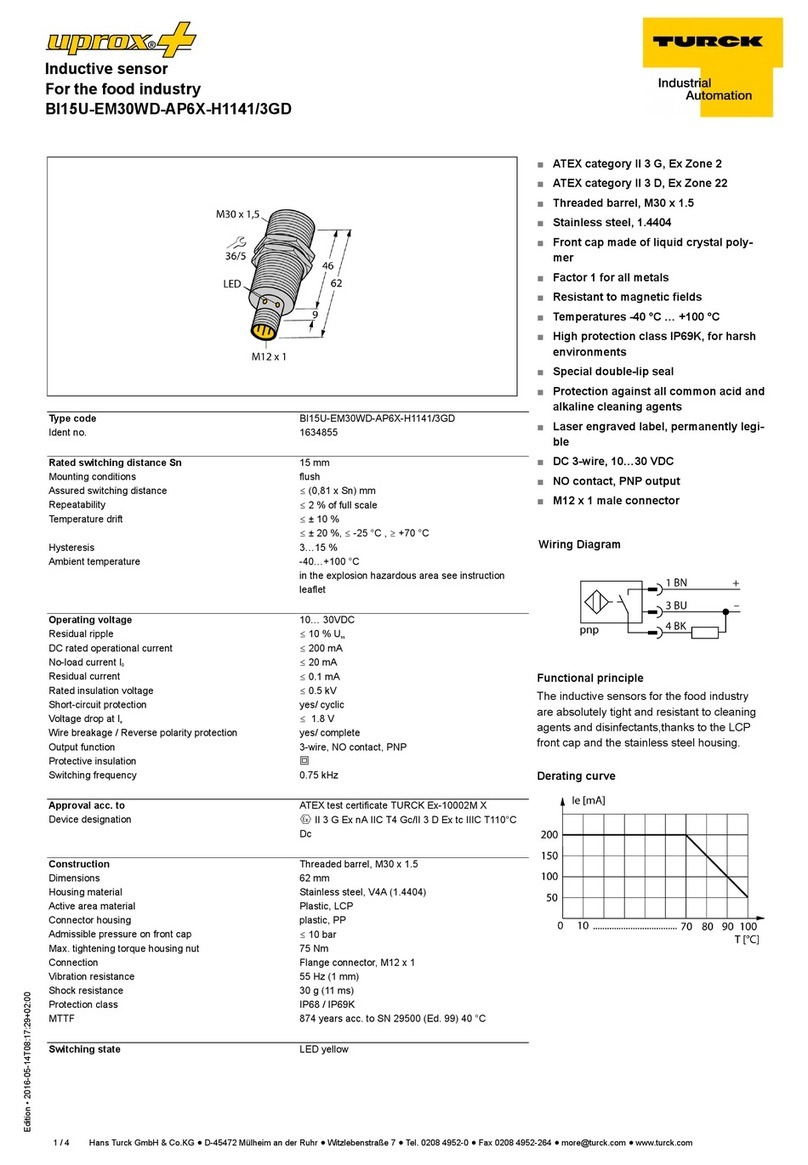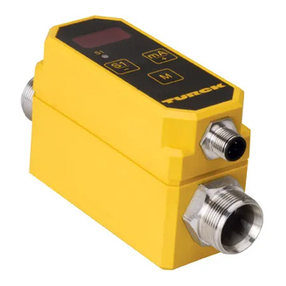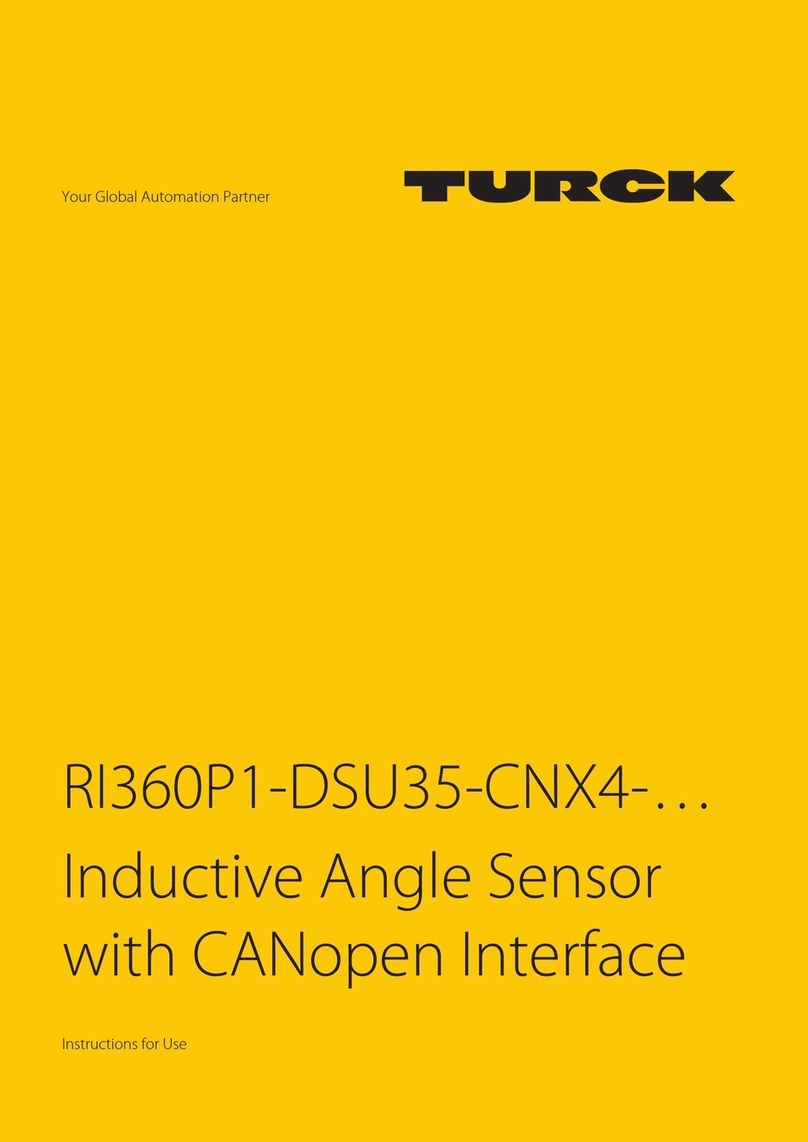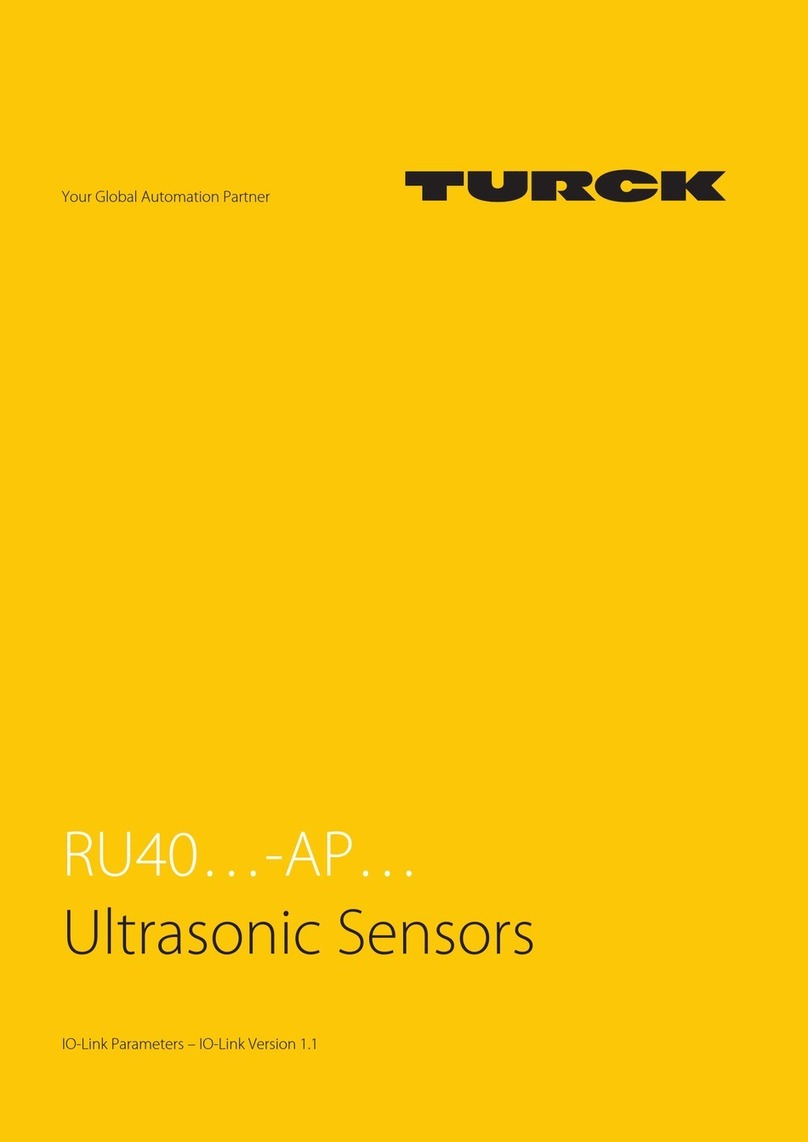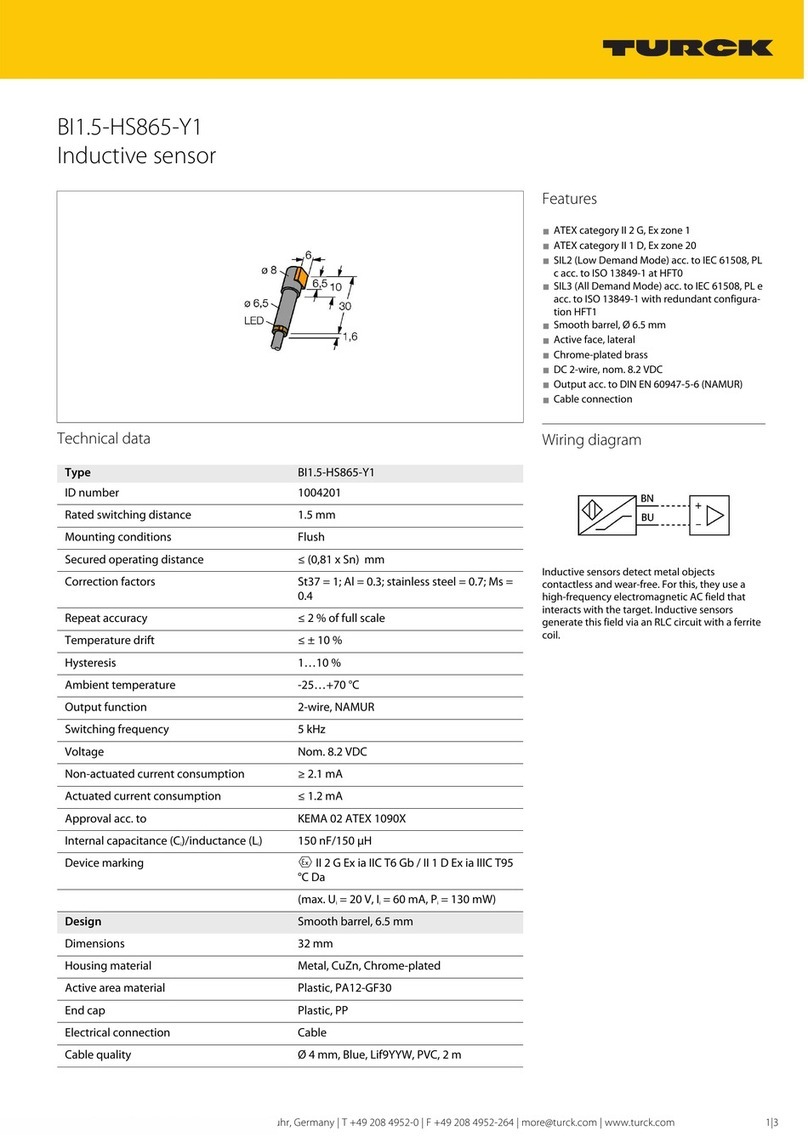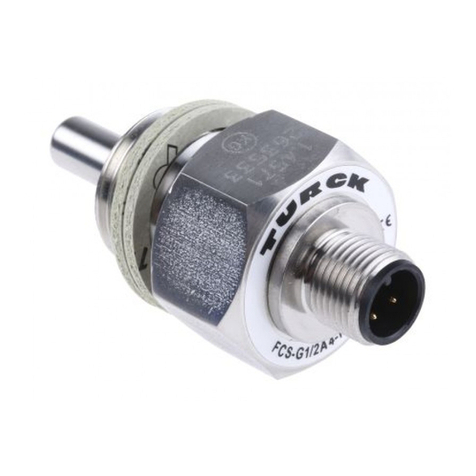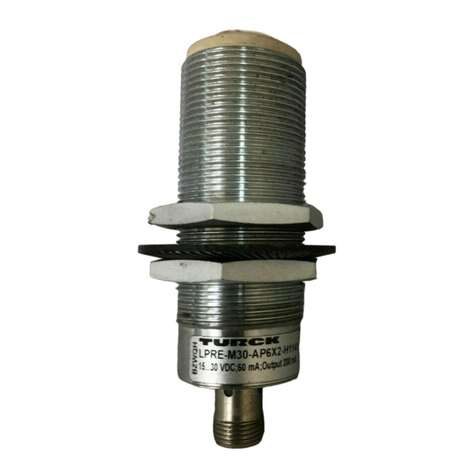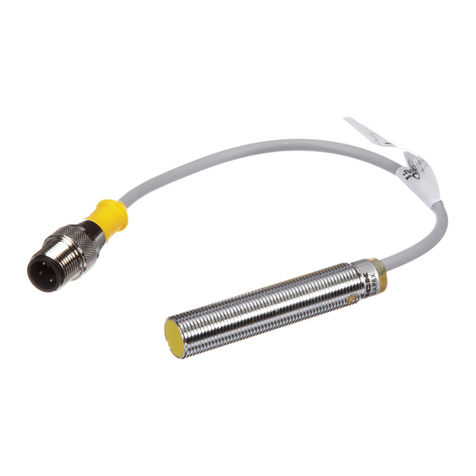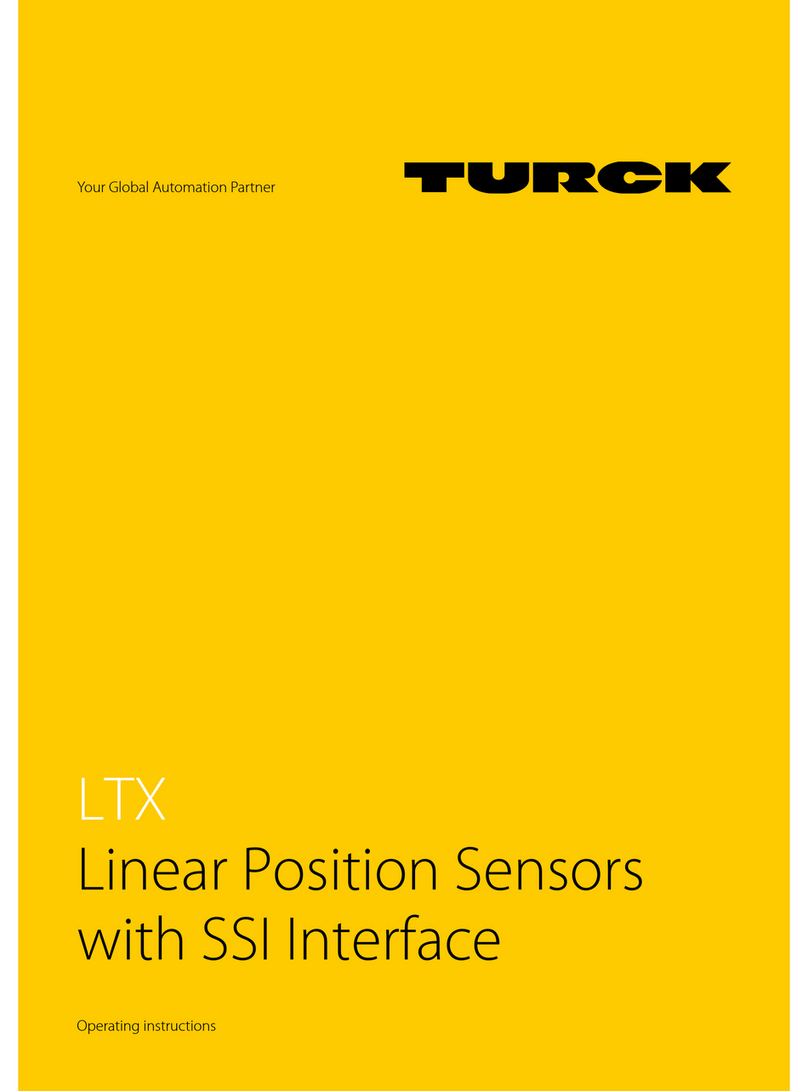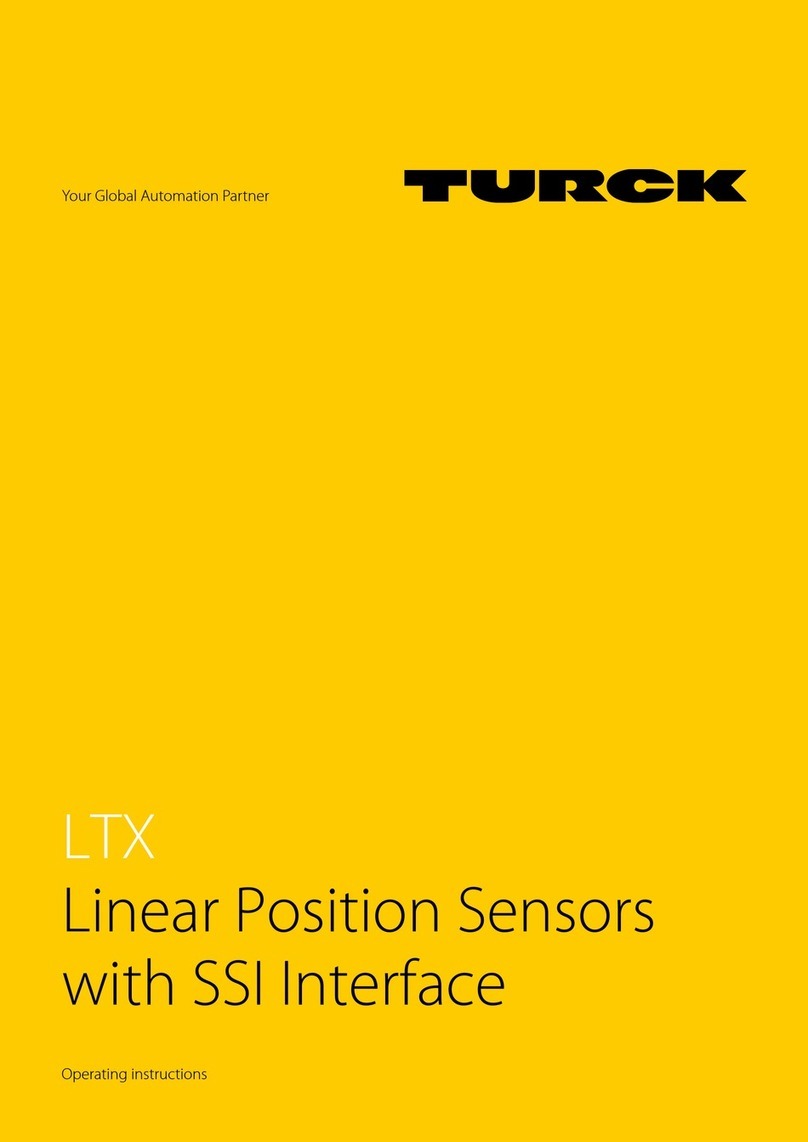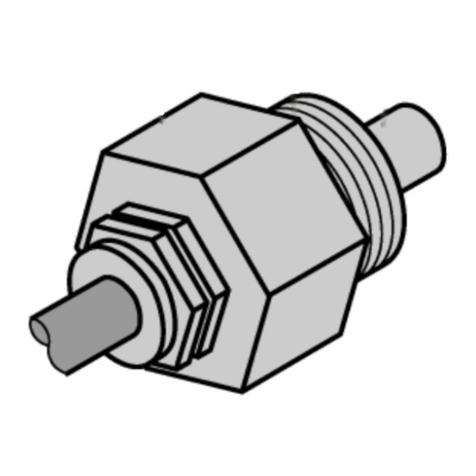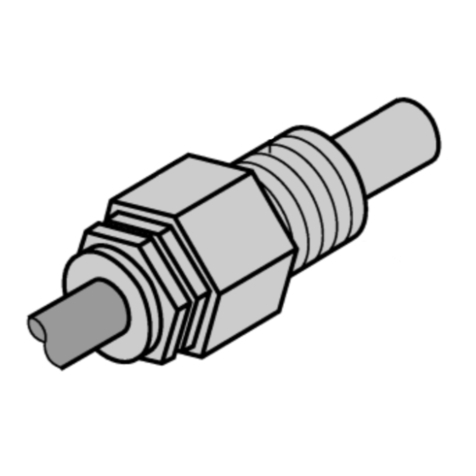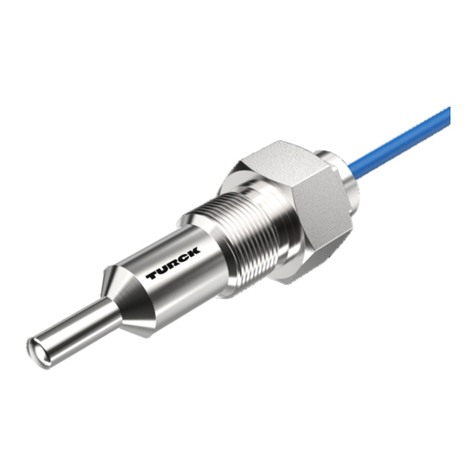Product description
4.2 Properties and features
■Threaded barrel M18 x 1 or M30 x 1.5
■Flush mountable
■Plastic, PA12-GF30, PEI
■Setting via IO-Link, teach adapter, manual bridging or teach button
4.3 Operating principle
The sensors detect filling levels of liquids or solids - either in direct contact with the medium, or
through a non-metallic container wall. The capacitive sensors are also designed for the non-
contact and wear-free detection of both metallic (electrically conductive) and non-metallic
(electrically non-conductive) objects.
4.4 Functions and operating modes
When delivered, the device functions as a proximity switch with a rated operating distance of 5
mm (BCT5-S18- ...) or 10 mm (BCT10-S30 ...). Additional functions can be taught by the user.
4.4.1 Setting options
The devices can be set via IO-Link with FDT tools such as PACTware™ or via the PLC software.
The capacitive sensors are also provided with additional setting options:
■Setting via teach adapter (optional accessories, not included)
■Settings made via manual bridging via pin 5 to UB or pin 5 to GND
■Setting via pushbuttons (for models with teach buttons)
4.4.2 “Medium present”mode (Full teach)
In “Medium present” (Full teach) mode, the device operates with minimum sensitivity. This is
useful for applications with easy to detect media. A switch point is taught for when a medium
or an object is present in the sensing range of the sensor.
The switch threshold for the “Medium present” mode is automatically set so that a safety re-
serve is produced for the switchoff limit. The safety reserve can be set via FDT/IODD. The switch
point is below the measured capacitance. Environmental factors such as temperature devia-
tions, condensation, the formation of film or pollution have less effect on the signal in “Medium
present” mode. The switch point can be set with the “Medium present” teach button. The inter-
val between two teach operations can be set to any length as required.
4.4.3 “Medium not present”mode (Empty teach)
In “Medium not present” (Empty teach) mode the device operates at maximum sensitivity. Pos-
sible uses include applications in which pre-actuation by the environment must be prevented.
The switch point is taught when no medium or object is present in the detection range of the
sensor.
The switch threshold is automatically set for the“Medium not present”mode so that there is a
safety reserve for the switchoff limit. The safety reserve can be set via FDT/IODD. In this case, the
switch point is above the measured capacitance. Environmental factors such as temperature
deviations, condensation, the formation of film or pollution have less effect on the signal in
“Medium present” mode. The “Medium not present” teach enables the switch point to be set.
The interval between two teach operations can be set to any length as required.
